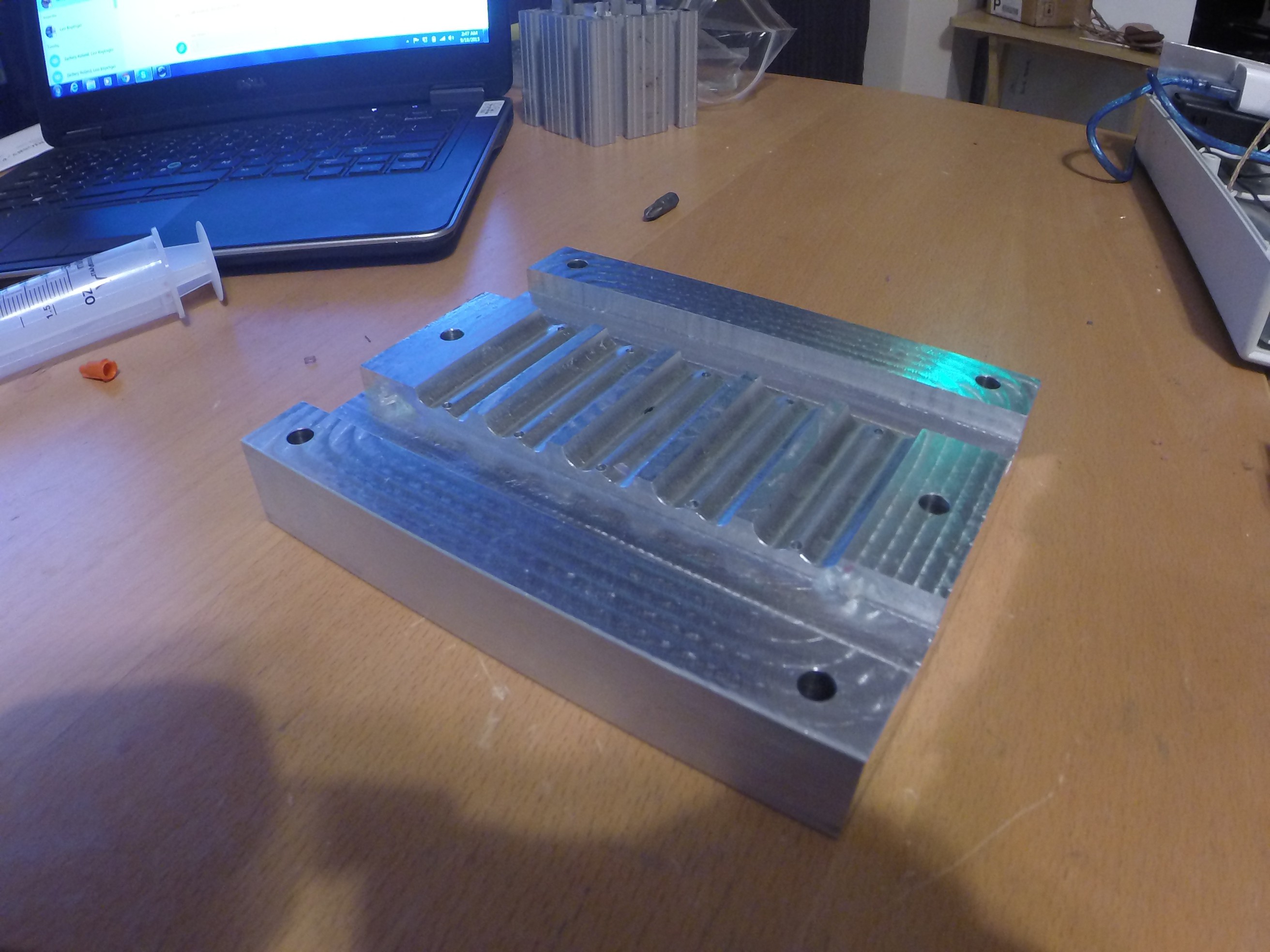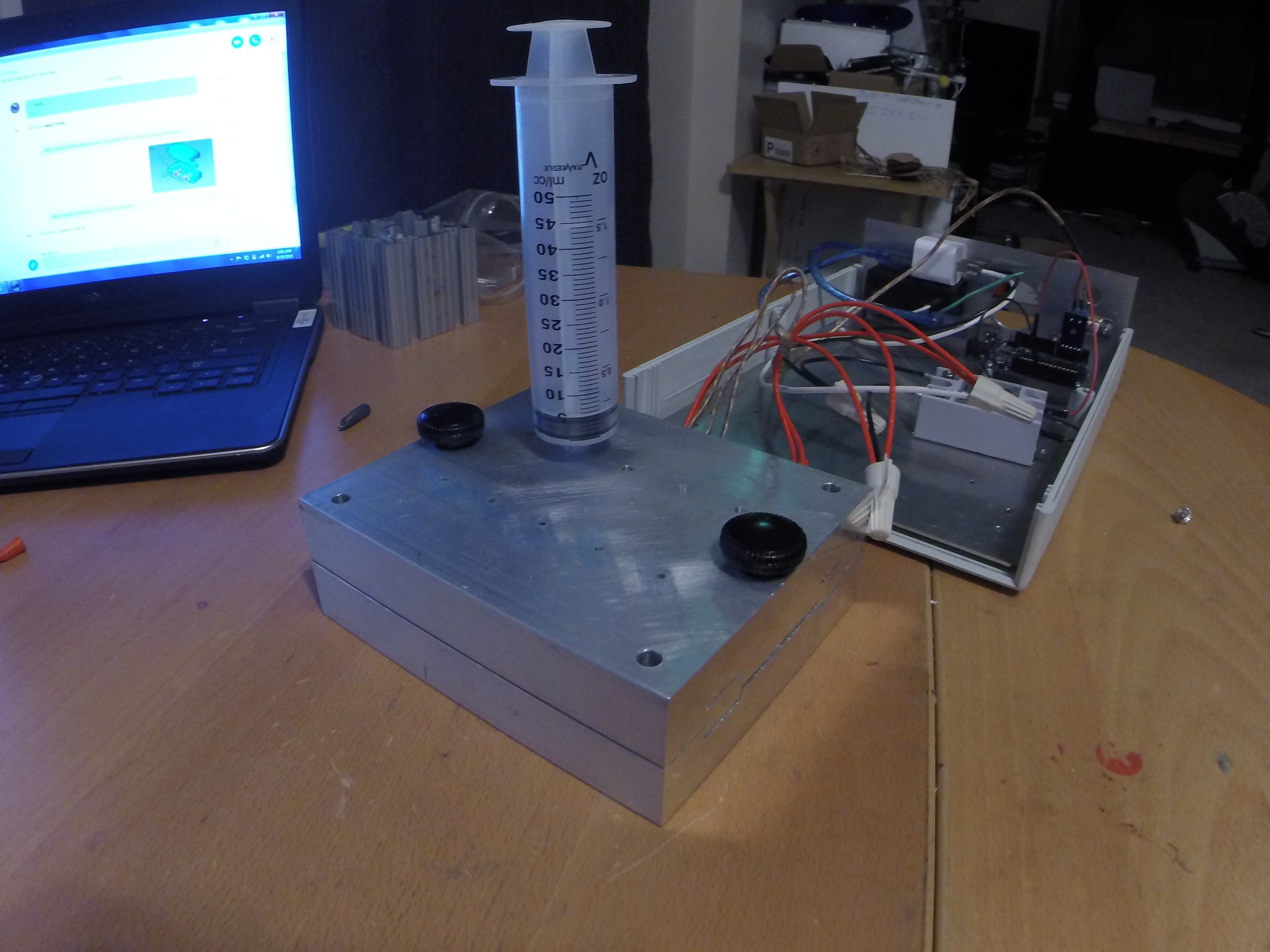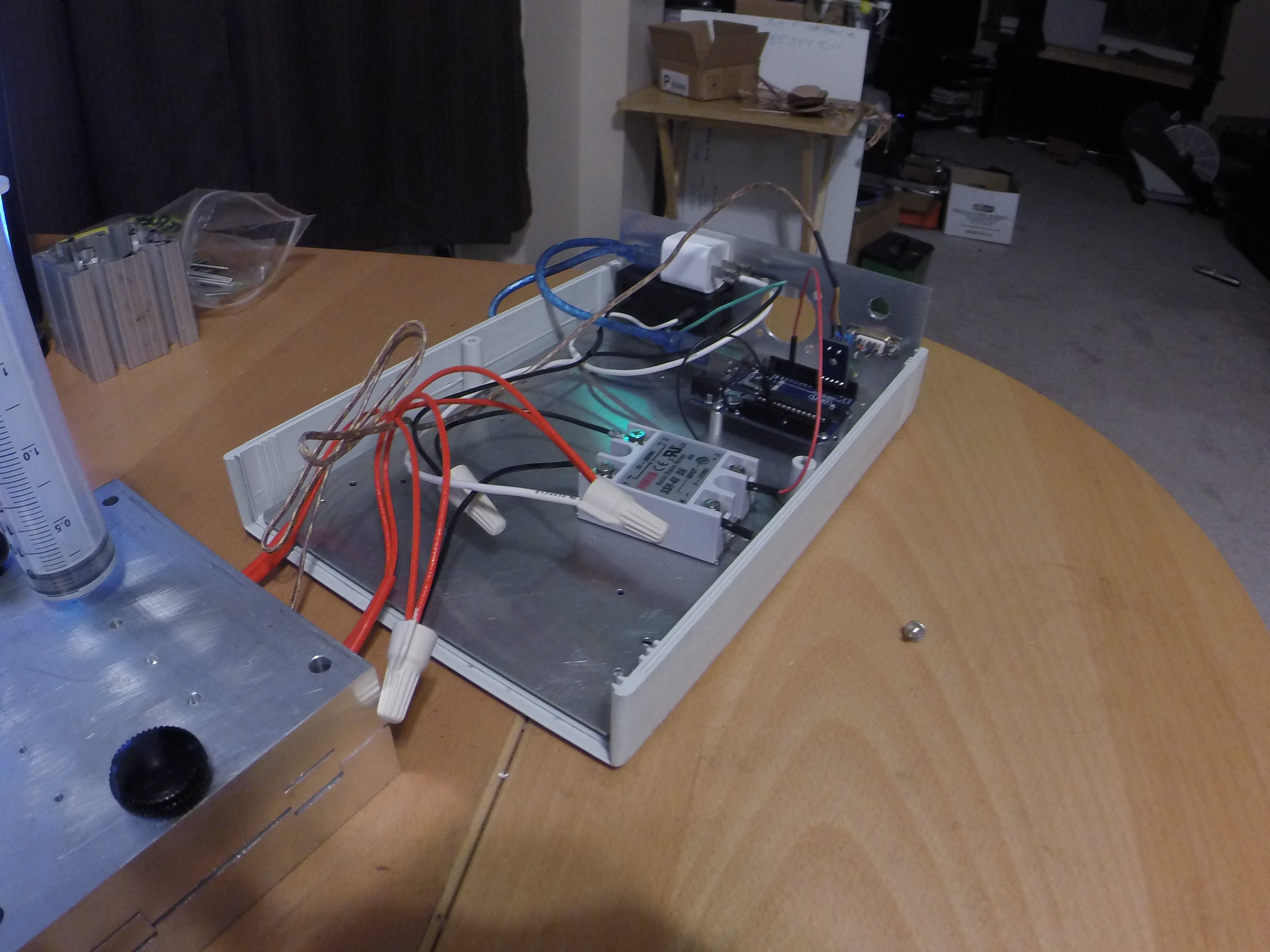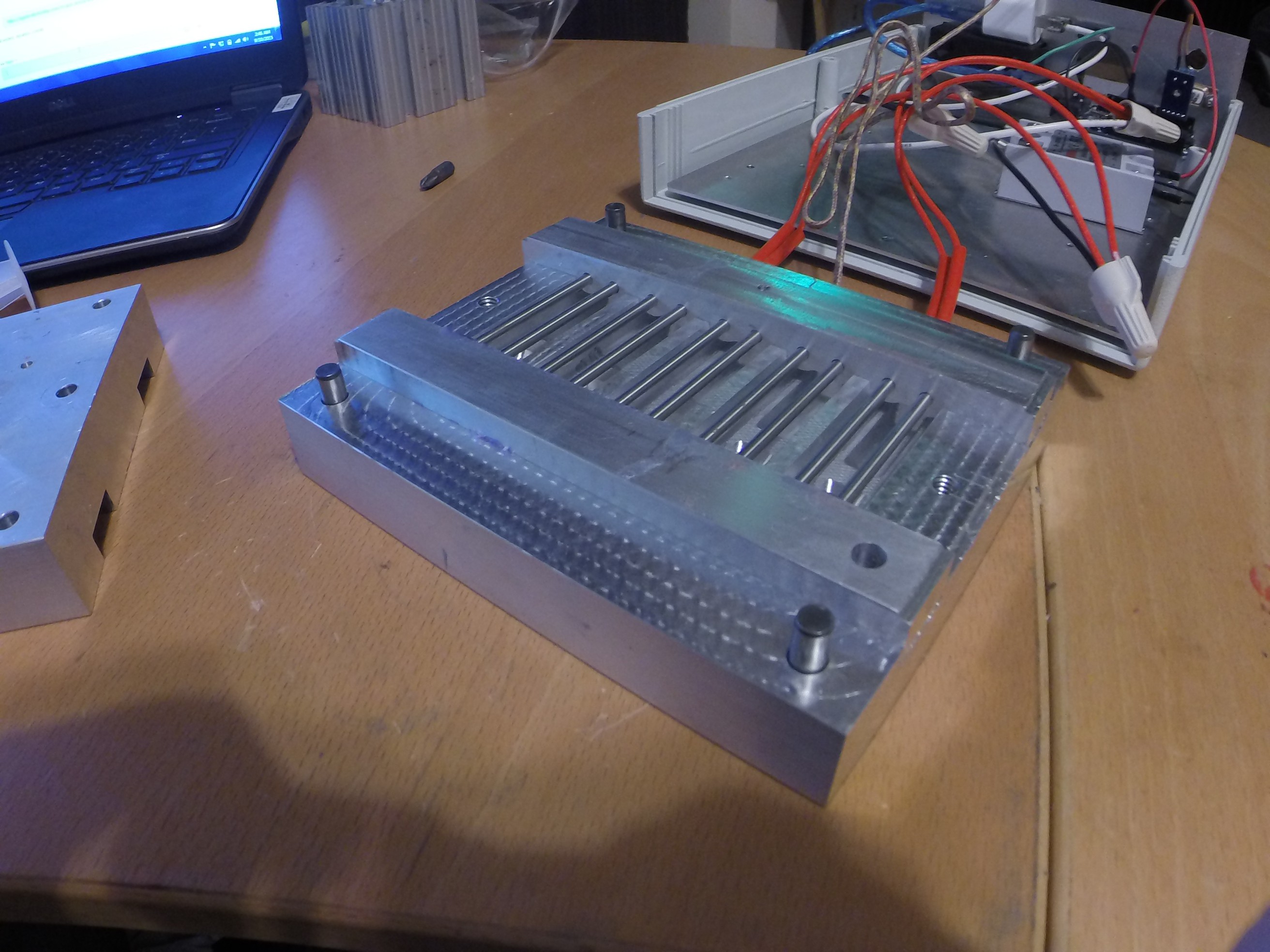After a fair bit of work I finished making my aluminum mold. The mold parts fit together with almost no gap. It is actually difficult to take them apart if you don't pull perfectly straight. The upper and lower half are aligned by 4 dowel pins. I think two would have been enough, and might make it easier to open the mold. The insert that holds the pins also has dowel pins holes drilled. I was not sure if I would need dowel pins to align these parts. So I drilled the holes but waited to press the pins in. Turns out that you don't need them because of the geometry of the insert. Everything is held together with two threaded knobs. You can hand tighten the knobs and none of the resin leaks out. This was a huge improvement over my old rubber band method.
The controller for the heating is a simple arduino with a solid state relay and thermocouple module. I have them mounted up in a case and plan on making it a nice project box with a display and the ability to control 3 channels. The box is big enough for 3 solid state relays, the arduino, the thermocouple modules and power. I used a old iphone charger to convert the 110v AC to 5v DC. The front of the case will have banana plugs to connect the heaters, panel mount thermocouple jacks, and a display to show the temperature. It should be handy for several future projects. A few that come to mind are my reflow oven, anodizing equipment, sous-vide cooking, or basically anything else I want to control. The Arduino has some PID libraries that I plan to use. But for now it is just a simple look that checks temperature. If the temp is above my set point it turns the SSR off, if the temp is below it turns it on. The loop fairly fast (about 250 milliseconds) and keep the temp within 2 degrees of 150 degree F. There is a fuse 3.15 amp fuse on the power coming into the box just to keep things safe. It heats up very quickly about 90 seconds or so. This allows me to remove the resin from the mold after about 1 hour instead of 4-5 hours. The parts are not fully cured and it takes up to 7 days to reach full strength. But being able to remove them from the mold means I can cast more parts.
Here are some pictures.




 jupdyke
jupdyke
Discussions
Become a Hackaday.io Member
Create an account to leave a comment. Already have an account? Log In.
Yeah, I am fairly impressed with the Tormach as well. I have to drive across town to use the machine. But I am laying the groundwork to get our own machine. I am trying to use the other machine on a few projects so we can demonstrate that we would be able to take advantage of it. What software are you using to generate your gcode? Do you have the tool changer?
Are you sure? yes | no
I have used SprutCAM and Fusion360 for CAM, Fusion360 is way way nicer. It is terrible for CAD though, which is too bad. I don't have a tool changer, they only make sense for production jobs if you ask me, I find it easy enough just to change tools with a wrench. For one off projects it's not like you just trust your gcode and walk away from the machine, I always sit with it and watch. If you do put in for a new machine, don't go crazy with add-ons at the beginning. We made that mistake and now have a 4th axis and a high speed companion spindle that have never been used once in 5 years.
Are you sure? yes | no
Yeah, I dont think I will have the problem with going crazy. I am gonna have to start with bare minimum to get a machine. Then slowly add on things as we need them. I don't really want the tool changer for production. But it would be nice to have some standard tools already loaded and the tool offsets programmed. The one that I have access to, I have to load my tools into the holders for each job and remove them after each job. It might be okay to manually change the tools if we can label them and keep the offsets programmed.
Are you sure? yes | no
definitely buy extra ER collet tool holders so you can save the tool offsets and keep your favorite tools in a dedicated holder with the offset pre-stored. that definitely does save a lot of time, I have about 25 tool holders. I hear you can get super cheap ones on ebay, I haven't tried them though.
http://www.ebay.com/itm/wholesales-10pcs-C3-4-ER20-1-38-Straight-collet-chuck-holder-CNC-Milling-Lathe-/161733955633?hash=item25a8185031
Are you sure? yes | no
another tip - don't get the flood coolant setup, it just makes a huge mess. I use the fogbuster coolant sprayer, the amount of liquid it puts out is so small you just let it evaporate at the end of the machining job.
Are you sure? yes | no
That is good to know. Thanks for the advice. My company is growing fast, but we don't have any where for the machine. I am hoping that sometime in the future we end up moving to a new building. Probably gonna be over a year from now. But I want to have all the groundwork laid so we can get our own machine.
Are you sure? yes | no
I used a Tormach PCNC 1100. It worked pretty well. I think I spent about 4 hours machining each half from start to finish. But a lot of that was setting up my work and tools. My gcode was also pretty conservative, so I was not really pushing the limits of the machine.
Are you sure? yes | no
Are you sure? yes | no
nice, what mill did you use for the mold?
Are you sure? yes | no